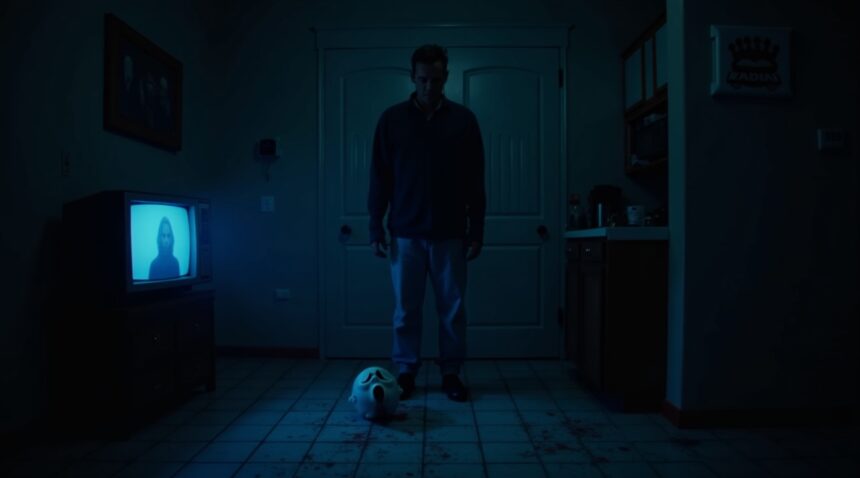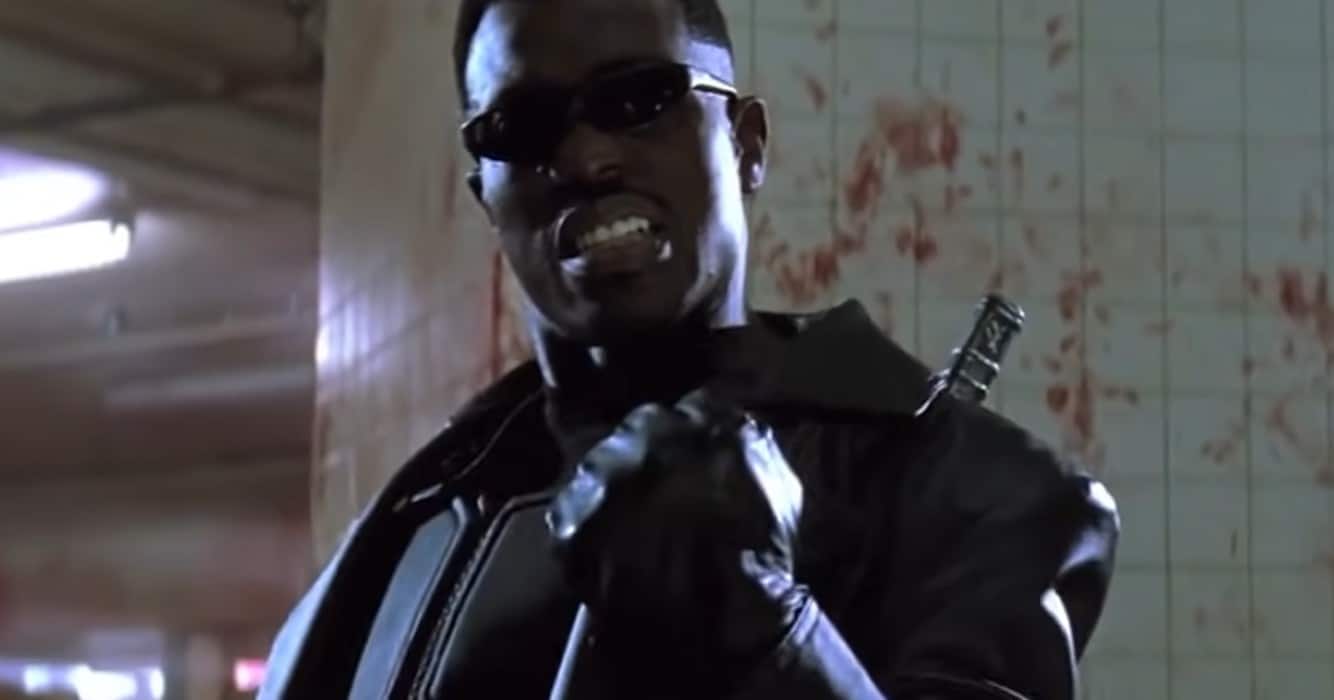Matthew Lillard’s confirmed return as Stu Macher in *Scream 7* marks one of horror cinema’s most shocking comebacks, with the actor reprising his role nearly three decades after his character’s apparent death in the original 1996 film.
Key Takeaways
- Matthew Lillard returns as Stu Macher in *Scream 7*, despite his character’s supposed death by electrocution in the original movie.
- The film is set to release on February 27, 2026, aligning with the 30th anniversary of the franchise.
- Kevin Williamson, the original creator, is making his directorial debut in the franchise after the previous directors exited the project.
- Neve Campbell reprises her iconic role as Sidney Prescott, and her character’s daughter will be introduced as a new addition to the story.
- The franchise, which has earned over $744 million, continues its tradition of secrecy, while leaning into nostalgic marketing and speculation surrounding the return of formerly dead characters.
Supernatural Twist?
As *Scream 7* approaches, fans have begun to speculate about a possible supernatural twist. With multiple characters long presumed dead now returning, theories abound about how the story might veer away from its grounded roots. This could mark a bold new direction for a franchise that has historically mocked horror tropes while embracing them.
Legacy Meets Next Generation
In addition to Sidney Prescott’s return, the film plans to focus on the next generation by introducing Sidney’s daughter as a central character. This move reflects the genre’s shift toward legacy sequel storytelling, appealing to both longtime fans and newcomers.
More details will be revealed as the release date nears. Stay up-to-date by visiting the official Scream movie website.
Stu Macher Back From the Dead: Matthew Lillard’s Shocking Return After 30 Years
The Impossible Return That Changes Everything
Matthew Lillard’s confirmed return as Stu Macher in Scream 7 represents one of horror cinema’s most unexpected comebacks. Nearly three decades after audiences watched his character meet an electrifying end in the original 1996 film, Lillard steps back into the franchise that launched his career. The actor’s resurrection as the beloved psychopath marks a pivotal moment for the series, especially considering Stu’s apparent death by electrocution during the climactic finale.
Stu Macher’s demise seemed definitive when Sidney Prescott dropped a television on his head in the original film’s kitchen sequence. However, fan theories have persisted for years, questioning whether the character truly died or if he somehow survived the seemingly fatal encounter. These persistent speculations have kept Stu’s memory alive within the franchise’s dedicated fanbase, making Lillard’s return feel both shocking and oddly inevitable.
The decision to bring back Matthew Lillard signals a major shift in the franchise’s approach to legacy characters. Unlike previous installments that relied heavily on new faces while maintaining connections to the original cast, Scream 7 appears committed to embracing its nostalgic roots fully. This throwback strategy positions the upcoming film as a celebration of the series’ origins while potentially opening doors for other presumed-dead characters to make surprise appearances.
Supernatural Elements and Storytelling Innovation
The inclusion of other previously deceased characters alongside Stu suggests Scream 7 may venture into uncharted territory for the franchise. David Arquette’s Dewey Riley, who met his end in Scream 5, and Scott Foley’s Roman Bridger, killed in Scream 3, are also returning for the new installment. This pattern of resurrections indicates the film might incorporate supernatural elements or employ unconventional narrative devices to explain these seemingly impossible returns.
Several storytelling approaches could justify these character revivals:
- Supernatural intervention that brings deceased characters back to life
- Dream sequences or alternate reality scenarios that allow for their appearances
- Flashback sequences that explore previously unseen events from past films
- The revelation that certain deaths weren’t as final as originally portrayed
- Introduction of multiverse concepts that enable different versions of characters to exist
These narrative possibilities represent a significant departure from the franchise’s traditionally grounded approach to horror. Previous Scream films maintained realistic foundations despite their meta-commentary on horror tropes, making this potential supernatural turn particularly intriguing for longtime fans.
The strategic use of nostalgia through Lillard’s return demonstrates the franchise’s commitment to honoring its legacy while pushing creative boundaries. His portrayal of Stu Macher became iconic not just for the character’s role as Ghostface, but for Lillard’s memorable performance that balanced dark humor with genuine menace. The actor’s natural charisma and comedic timing made Stu one of the series’ most quotable and beloved antagonists.
Lillard’s return also capitalizes on the current entertainment landscape’s emphasis on legacy sequels and franchise revivals. His involvement provides immediate credibility and excitement for both existing fans and newcomers discovering the series. The actor’s continued popularity through various projects, including his voice work and recent film appearances, ensures his return carries significant cultural weight.
The anticipation surrounding Stu Macher’s comeback reflects the character’s enduring impact on horror culture. His partnership with Billy Loomis as the original Ghostface killers established the template for subsequent films, making his resurrection feel like a homecoming for the franchise. Lillard’s return promises to deliver the nostalgic thrills that modern audiences crave while potentially revolutionizing how the Scream series approaches character mortality and storytelling conventions.
Scream 7 Hits Theaters February 27, 2026 for Franchise’s 30th Anniversary
Scream 7 officially arrives in theaters on February 27, 2026, perfectly timed to celebrate the franchise’s remarkable 30th anniversary. This milestone release date honors the original 1996 film that revolutionized the slasher genre and established Wes Craven’s masterpiece as a cultural phenomenon.
The journey to this release hasn’t been smooth, with production facing significant challenges throughout development. SAG-AFTRA strikes disrupted the initial timeline, while multiple director changes and key cast member departures created additional complications for Paramount Pictures. These setbacks pushed the project back considerably from its original planned timeline.
Production Timeline and Filming Details
Despite earlier obstacles, filming finally began in January 2025 in Atlanta, Georgia. The production team chose this location to manage costs while maintaining the atmospheric quality fans expect from the franchise. Atlanta’s diverse locations provide the perfect backdrop for creating the suspenseful environments that define Scream films.
The 30th anniversary timing carries special significance for the horror community. This milestone creates unique opportunities to blend nostalgia with fresh storytelling approaches that can satisfy veteran fans while attracting newcomers to the franchise. The February release date positions Scream 7 strategically ahead of the spring horror season, giving it room to dominate theaters without major competition.
Production delays actually worked in the film’s favor in some ways, allowing writers to refine the script and casting directors to secure the right talent mix. Matthew Lillard’s return adds authenticity to this anniversary celebration, bringing back an actor who helped define the franchise’s early success.
The Atlanta filming location offers practical advantages beyond cost savings:
- Georgia’s film industry infrastructure offers experienced horror production crews
- State tax incentives help filmmakers stretch production budgets
- More resources can be devoted to practical effects and cinematography
Paramount Pictures faces the challenge of honoring three decades of franchise history while creating something genuinely surprising for audiences. The 2026 release date provides sufficient post-production time to perfect the balance between classic Scream elements and contemporary horror expectations. February traditionally serves horror films well, as audiences seek thrills during the winter months before spring blockbusters arrive.
The anniversary aspect creates marketing opportunities that extend beyond typical horror promotion. Fans can expect:
- Special theatrical screenings of past Scream films
- Retrospective content looking back at the franchise’s legacy
- Commemorative merchandise celebrating the 30-year milestone
This 30th anniversary celebration positions Scream 7 as both a standalone thriller and a commemorative event for horror enthusiasts worldwide.
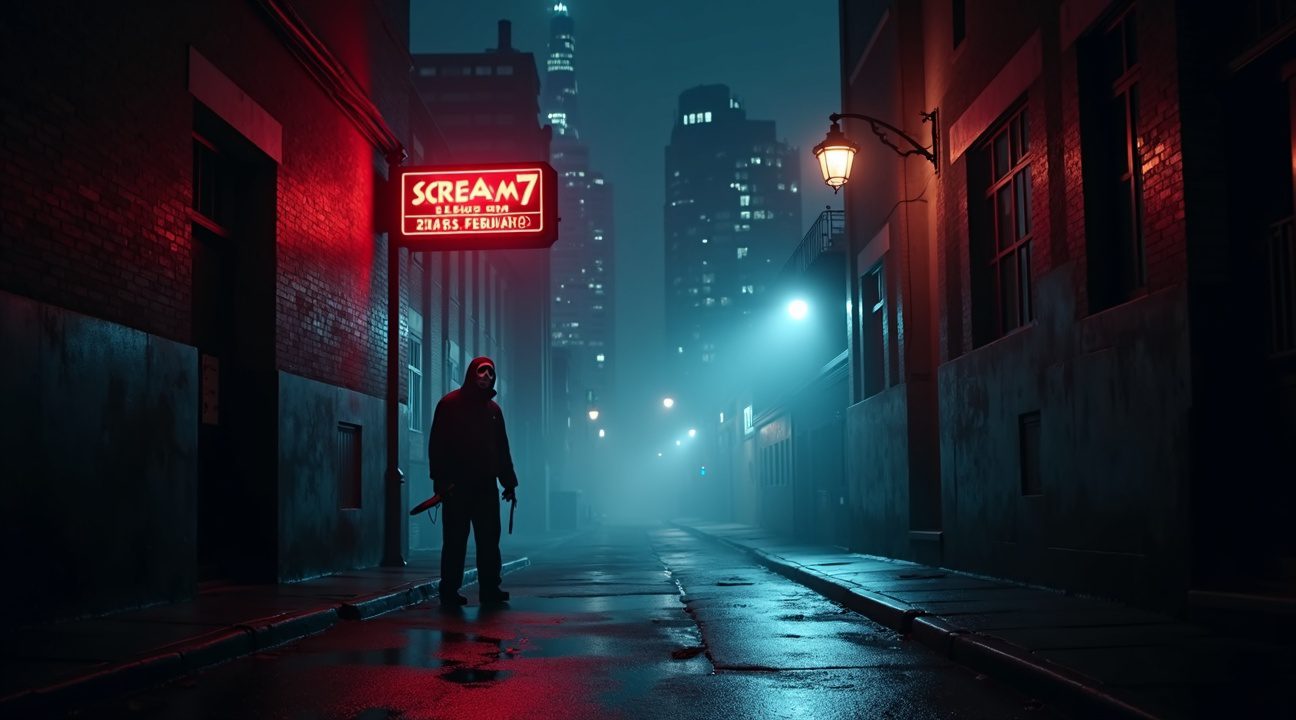
Original Scream Creator Kevin Williamson Takes Director’s Chair for First Time
Kevin Williamson’s transition from writer to director represents a pivotal moment for the Scream franchise. The original creator who penned the iconic 1996 film that redefined slasher cinema is now stepping behind the camera for Scream 7. This marks Williamson’s directorial debut within the franchise he helped establish, bringing a fresh perspective while maintaining deep connections to the series’ DNA.
The creative team assembling for this installment demonstrates a commitment to genre expertise. Guy Busick handles screenplay duties, working from a story he co-developed with James Vanderbilt. Both writers bring significant horror credentials to the project, ensuring the script maintains the sharp wit and self-aware commentary that made the original films successful.
Production Changes Signal Creative Overhaul
Following the departures of directors Matt Bettinelli-Olpin, Tyler Gillett, and Christopher Landon, the franchise underwent a significant creative restructuring. These changes weren’t merely personnel shifts but represented a fundamental pivot in the series’ direction. Production teams made deliberate choices to emphasize nostalgia and authenticity, moving away from recent interpretations back to the franchise’s foundational style.
This strategic shift reflects industry recognition that fans crave the original tone and atmosphere that made Scream a cultural phenomenon. Williamson’s involvement as director ensures direct creative control from someone who understands the franchise’s core appeal. His unique position as both creator and director allows for seamless integration of original concepts with contemporary filmmaking techniques.
The decision to bring Williamson into the director’s chair also signals confidence in returning to proven formulas. Rather than continuing with newer directorial voices, the production team chose to reconnect with the franchise’s origins. This approach suggests Scream 7 will prioritize the elements that initially distinguished the series from other horror films.
Williamson’s directing role creates opportunities for deeper exploration of characters and themes he originally conceived. His intimate knowledge of the franchise’s mythology positions him to deliver authentic storytelling that honors previous installments while pushing the narrative forward. The combination of his creative vision with experienced collaborators like Busick and Vanderbilt creates a balanced team capable of delivering both innovation and nostalgia.
This creative overhaul extends beyond simple director replacement, representing a comprehensive return to the franchise’s roots. With Matthew Lillard returning for new projects, audiences can expect familiar faces alongside fresh creative energy. Williamson’s directorial debut promises to blend his foundational understanding of these characters with evolved filmmaking sensibilities.
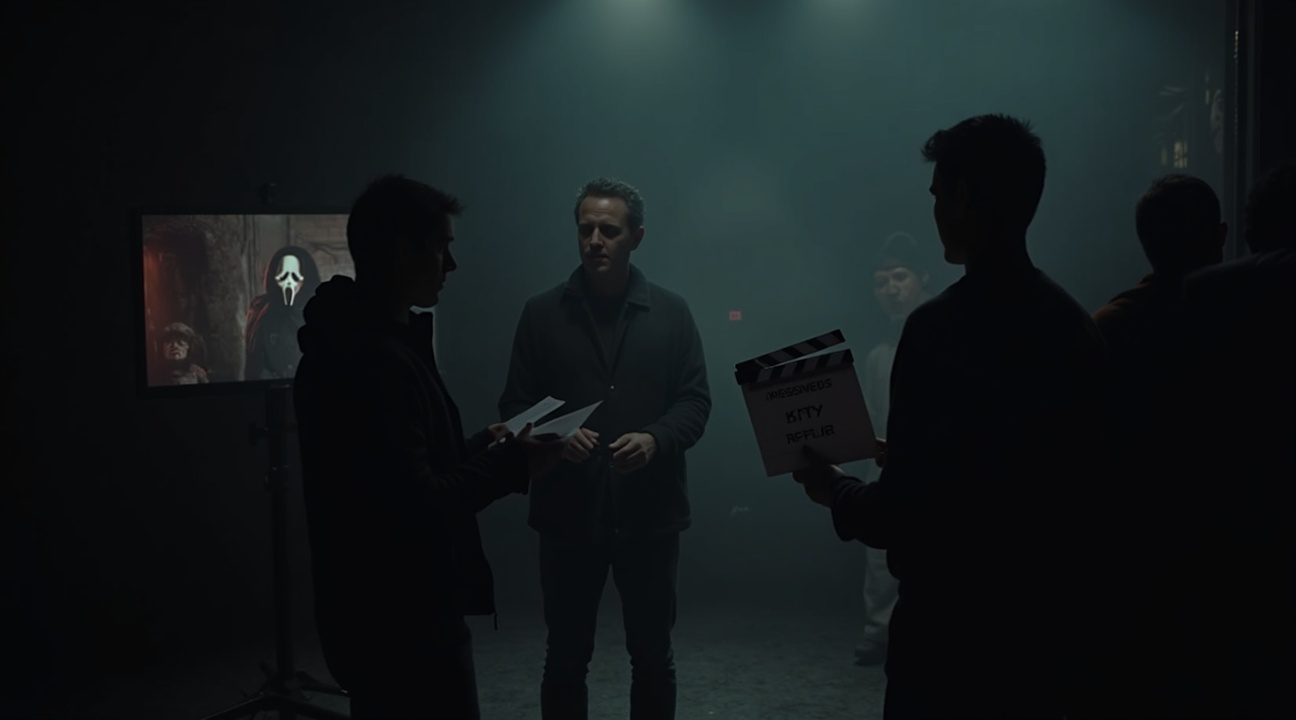
Sidney Prescott and Legacy Cast Reunite Despite Past Conflicts
Neve Campbell’s return as Sidney Prescott marks a significant victory for Scream 7, especially after her notable absence from Scream VI due to pay disputes. Her comeback alongside franchise veterans signals a clear shift back to the series’ roots, with the production team prioritizing legacy characters to anchor the latest installment.
Core Franchise Veterans Lead the Charge
Campbell rejoins longtime series stalwarts Courteney Cox as Gale Weathers and David Arquette as Dewey Riley, forming the familiar trio that’s anchored the franchise since its inception. The most surprising addition comes with Matthew Lillard as Stu Macher, whose character’s return opens intriguing possibilities for the storyline given his apparent demise in the original film.
This reunion represents more than just casting decisions – it demonstrates the studio’s commitment to recapturing the essence that made the original films culturally significant. The legacy characters provide continuity and emotional weight that newer entries sometimes struggled to achieve without these foundational figures.
Fresh Faces Join Established Names
The returning cast integrates seamlessly with newer franchise additions, creating a multi-generational ensemble.
- Mason Gooding continues as Chad Meeks-Martin
- Jasmin Savoy Brown reprises her role as Mindy Meeks-Martin
Both carry forward the legacy of their characters’ family connections to the original story.
Fresh talent expands the roster:
- Isabel May takes on the role of Sidney’s daughter, adding personal stakes for Campbell’s character
- Joel McHale joins as Mark Evans, contributing his comedic timing to the horror dynamic
- Mckenna Grace, Anna Camp, and Scott Foley (as Roman Bridger) round out a daring ensemble
The casting strategy clearly emphasizes nostalgia while building bridges to future installments. By bringing back beloved characters alongside introducing new family connections, Scream 7 positions itself to satisfy longtime fans while establishing new storylines for potential sequels. This approach addresses previous criticism about the franchise losing its emotional core when key legacy characters were absent or underutilized.
Campbell’s return particularly resonates because Sidney Prescott represents the heart of the Scream universe. Her character’s evolution from final girl to survivor to protective mother creates natural story progression that grounds the supernatural elements in relatable human experiences. The pay dispute resolution also signals improved relationships between talent and production, potentially ensuring more stable future collaborations.

Plot Details Kept Under Wraps as Marketing Focuses on Nostalgia and Mystery
Production companies are maintaining extraordinary secrecy around Scream 7‘s storyline, with extensive non-disclosure agreements binding everyone involved in the project. Cast members and crew aren’t permitted to discuss central plot points, the killer’s identity, or specific details about how beloved characters make their anticipated returns. This level of protection extends beyond typical franchise security measures, suggesting major narrative surprises await longtime fans.
The marketing campaign deliberately capitalizes on this mystery, positioning Scream 7 as both a legacy sequel and a return to the franchise’s roots. Promotional materials emphasize the film’s connection to the original trilogy while teasing unresolved mysteries that have puzzled fans for decades. Studio executives recognize that nostalgia serves as a powerful draw, particularly when combined with the promise of answers to long-standing questions about the Woodsboro murders and their aftermath.
Fan Speculation Reaches Fever Pitch
Online communities are buzzing with theories about the film’s direction, driven by calculated leaks and cryptic social media posts from cast members. Speculation centers on several key areas:
- The method behind deceased characters’ returns, with theories ranging from flashbacks to supernatural elements
- Potential connections between new murders and the original Ghostface killings
- The possibility of multiple killers working in tandem, echoing previous franchise entries
- Hidden family connections that could reshape the series’ mythology
Social media engagement has skyrocketed as fans dissect every trailer frame and promotional image for clues. Matthew Lillard’s confirmed return has sparked particular excitement, with many questioning how Stu Macher could survive his apparent death in the original film.
The franchise’s whodunit structure makes secrecy essential to preserving the viewing experience. Previous Scream films succeeded largely because audiences couldn’t predict the killer’s identity until the final act revelation. Marketing teams understand that maintaining this element of surprise requires careful coordination between promotion and plot protection.
Legacy characters’ involvement suggests the film will explore deeper franchise mythology while introducing fresh elements to attract new viewers. The balance between honoring the original films and creating something innovative has become central to the promotional strategy. Teasers hint at connections spanning all previous entries, suggesting a comprehensive approach to franchise continuity.
The slasher revival trend in recent years has created heightened expectations for Scream 7‘s contribution to the genre. Horror fans expect both nostalgic callbacks and modern filmmaking techniques that acknowledge how the genre has evolved since the last theatrical release. Marketing materials deliberately play with these expectations, using familiar visual cues while promising unexpected narrative developments.
Studios recognize that mystery-driven marketing generates sustained interest over longer periods compared to traditional promotional approaches. The strategy creates multiple conversation cycles as fans analyze each new piece of information, extending the film’s cultural presence well before its release date.
Character dynamics from previous films receive careful attention in promotional materials, with relationships and unresolved conflicts taking center stage. The focus on personal connections rather than just the killer’s identity suggests the film will explore emotional consequences of past events alongside delivering genre thrills.
Production secrecy extends to technical aspects as well, with special effects teams and makeup artists bound by similar agreements. This comprehensive approach to information control demonstrates the studio’s commitment to preserving narrative surprises while building anticipation through strategic reveals.
The marketing approach acknowledges that modern audiences consume content differently than previous generations, requiring more sophisticated engagement strategies. Social media platforms enable real-time fan interaction and theory sharing, which the promotional campaign actively encourages while maintaining essential plot secrecy.
Horror franchise revivals face unique challenges in satisfying both nostalgic expectations and contemporary storytelling standards. Scream 7‘s marketing suggests confidence in striking this balance while delivering the series’ signature blend of meta-commentary and genuine scares that defined its cultural impact.
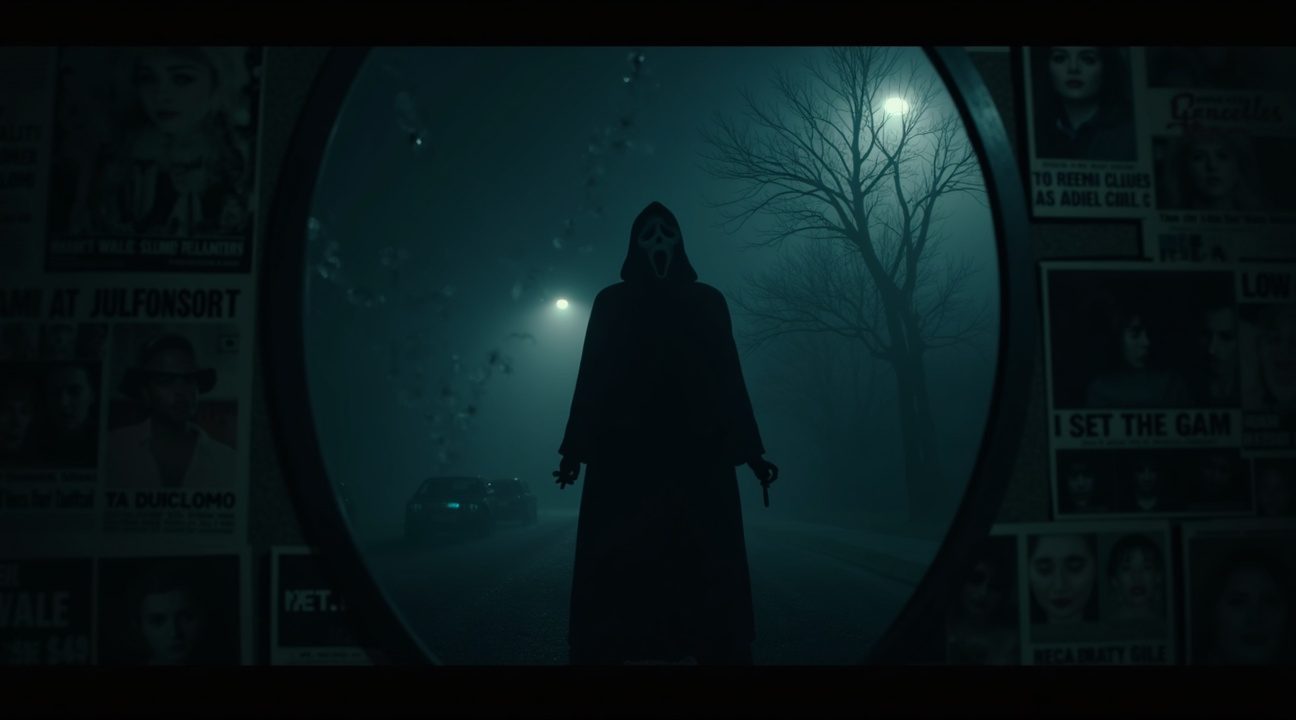
Seventh Installment Aims to Revitalize Horror Franchise Worth Over $744 Million
Scream 7 carries the substantial weight of continuing one of horror cinema’s most influential franchises. Since Wes Craven and Kevin Williamson launched the series in 1996, the Scream franchise has generated over $744 million in global box office revenue across six previous films, establishing itself as a cornerstone of modern horror entertainment.
Franchise Evolution and Financial Success
The original 1996 classic revolutionized the slasher genre by introducing self-aware characters who understood horror movie rules while simultaneously being trapped within them. This meta-commentary approach distinguished Scream from countless other horror films and created a template that filmmakers still follow today. Each subsequent installment has built upon this foundation while adapting to contemporary horror trends and audience expectations.
I’ve observed how the franchise’s financial performance reflects its cultural impact, with each film contributing significantly to the series’ impressive total earnings. The success stems from Scream’s unique ability to function both as genuine horror and clever commentary on the genre itself.
Revitalizing Classic Elements
Scream 7 faces the challenge of honoring established franchise traditions while introducing fresh elements that can captivate both longtime devotees and new audiences. The return of characters previously thought dead presents exciting opportunities to expand the mythology that fans have followed for decades. These resurrections aren’t merely nostalgic gestures but strategic moves to deepen the interconnected storylines that have made fan theories a crucial part of the Scream experience.
Modern storytelling techniques will blend with the series’ signature meta-horror approach, creating a viewing experience that acknowledges horror’s evolution since the franchise’s inception. The seventh installment must balance reverence for Craven’s original vision with contemporary horror sensibilities that today’s audiences expect.
Interestingly, Matthew Lillard’s return to horror demonstrates how actors from the franchise’s earlier entries continue to embrace their horror roots across different projects. His involvement signals the enduring appeal of characters who helped define the series’ identity.
The slasher revival movement has created an ideal environment for Scream 7‘s release, as audiences have shown renewed interest in self-aware horror that doesn’t take itself too seriously. This cultural moment positions the film to potentially achieve both critical recognition and commercial success, continuing the franchise’s tradition of profitable entertainment that respects its audience’s intelligence while delivering genuine scares.
Sources:
IMDb News “Matthew Lillard Returning for ‘Scream 7′”
GamesRadar “Scream 7 release date, cast, plot, and everything else we know so far”
GameRant “Kevin Williamson Teases Matthew Lillard’s Highly Anticipated Return”
IMDb News “‘Scream 7’ Gets a Release Date”
IMDb “Full cast & crew – Scream 7 (2026)”
Wikipedia “Scream 7”
IMDb “Scream 7 (2026)”
YouTube “SCREAM 7 Movie Preview (2026) Sidney Prescott is back”

